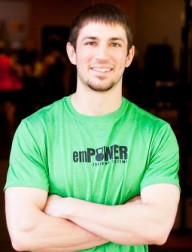 Today’s post will be for a large majority of the population, people who spend a good portion of their day sitting at a desk!! The more technology progresses, the more people sit and stare at a screen for large periods of time, whether it is for a job, for school, or for entertainment. Prolonged sitting has started to rear its ugly head in the form of bad posture as well as nagging mobility limitations for the chronic desk. The first problem this epidemic presents is the loss of vestibular system use. When an individual looks at a screen all day they don't move their eyes or head enough to excite the vestibular system. The average layperson might not find this important. However, every muscle in the body and every sensory system is attached to the vestibular system. The vestibular system controls balance, posture and reflexes. Motion feeds the vestibular system, which helps nourish the brain and shape the body. This can be easily fixed by pausing desk work periodically and looking around; up, down, left to right. Intentionally moving ones eyes and head will excite the vestibular system. The next issue in need of correction is breathing pattern. When an individual sits all day, breathing is predominantly in the chest, using muscles in the upper back and neck. This is not how humans were made to breathe; but rather, these are emergency breathing muscles. Human beings were meant to breathe into the diaphragm. Babies are the perfect example of diaphragmatic breathing and usually only resort to chest breathing when sick. This incorrect breathing pattern can be corrected with crocodile breathing. Here’s how: lie face down with the forehead on the tops of hands and relax. Next, take a deep breath in through the nose, sending air down into the pelvis. The stomach should expand into the floor as if an inner tube around the stomach is being inflated. Take 10 deep breathes at any point throughout the day. An additional issue caused by prolonged periods of sitting is pain in relation to the thoracic spine. This is the middle part of the spine, which usually tightens up after time spent sitting (shoulders will be rolled forward and the upper back will be rounded). This can cause issues from lingering shoulder pain to low back problems and can be addressed with the following correctives:
The last issue in need of correction is the hip. Individuals who sit all day start to create tightness in the front of their hips and quads. This can lead to lower back and knee pain. Here are a few corrections for this issue:
3. Single leg bridge – Lying on his/her back, an individual will pull and hold one knee into their chest. The other leg will be bent with the heel pressing into the floor, spaced about a foot from the butt. Lifting the toes and bracing the core, he/she will press through the planted heel, driving the hips to the ceiling. This position will be held at the top for a second or two, lowered back down and repeated for 10 repetitions each side. Single Leg Bridge These correctives should be implemented into the daily routine of anyone who spends long periods of time seated. Breaking every few hours from deskwork, pick one or two exercises to perform from this list. These can also be done at home, after a long day of sitting at the desk. If you’d like to learn more about this, please contact me, Patrick Hagen
1 Comment
|
Archives
November 2023
Categories
All
|
|
|
emPower Training Systems
276 Granite Run Dr, Lancaster, PA 17601 (717) 300-0543 M-Th: 5am - 8pm Friday: 5am - 7pm Saturday: 7am - 10:30am Sunday: 7am - 8am Privacy Policy |


 RSS Feed
RSS Feed